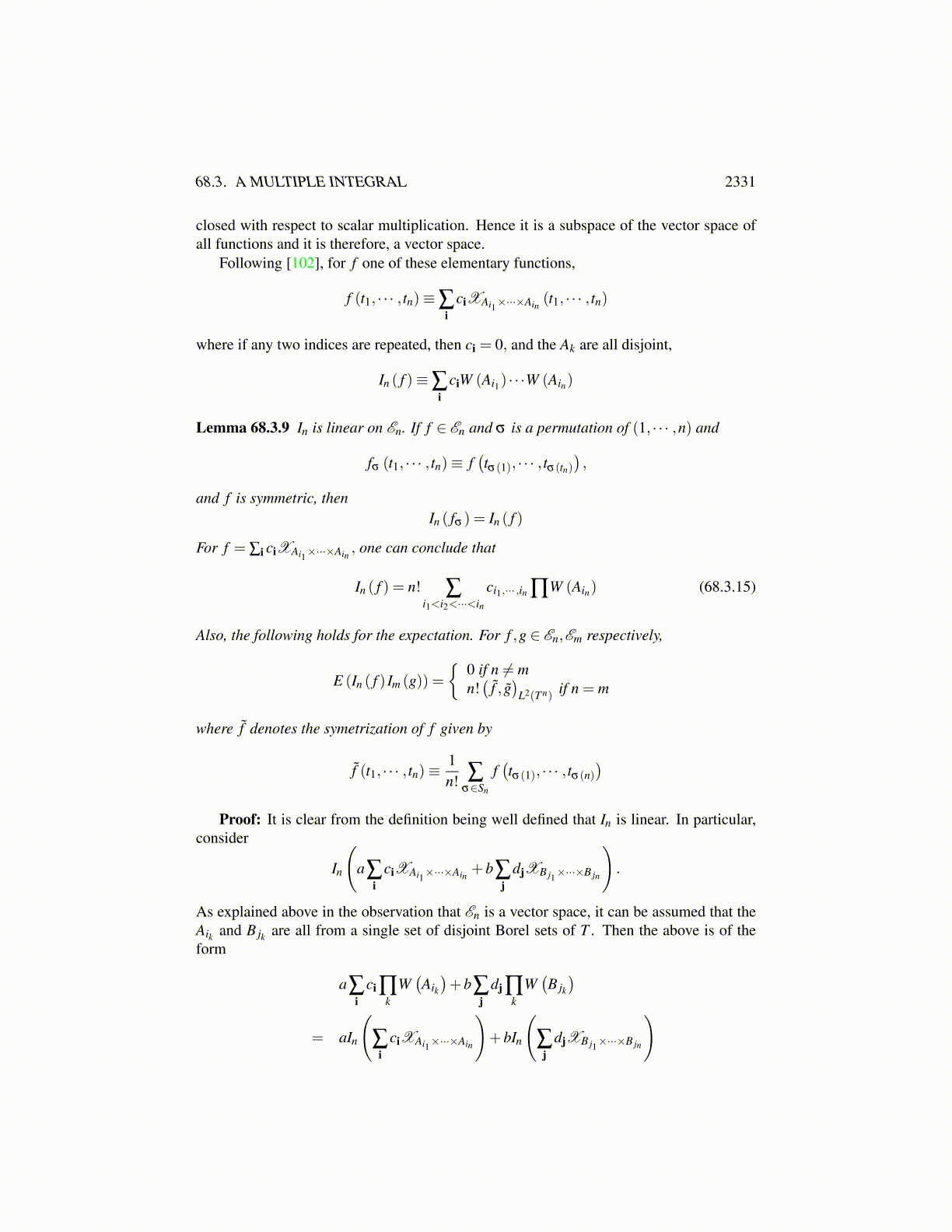
68.3. A MULTIPLE INTEGRAL 2331
and this reduces to what was to be shown because ω0 was arbitrary.In what follows it will be assumed ci = 0 if any two of the ik are equal. That is
∑i
ciXAi1×···×Ain(t1, · · · , tn) = 0
if any ti = t j.
Definition 68.3.7 Let En be functions of the form
f (t1, · · · , tn)≡∑i
ciXAi1×···×Ain(t1, · · · , tn)
where the Ak come from some list of the form {A1,A2, · · · ,Am} where this list of sets ispairwise disjoint, each Ak ̸= /0 and ci = 0 whenever two indices are equal. By Lemma68.3.5 this is the same as saying that f = 0 if ti = t j for some i ̸= j. A function of nvariables f is symmetric means that for σ a permutation,
f (t1, · · · , tn) = f(tσ(1), · · · , tσ(n)
)Lemma 68.3.8 Let f (t1, · · · , tn)≡∑i ciXAi1×···×Ain
(t1, · · · , tn) . Then f is symmetric if andonly if for all {ci1,··· ,in}
ci1,··· ,in = ciσ(1),··· ,iσ(n)
Proof: First of all, every ci = 0 if there are repeated indices so it suffices to consideronly the case where all indices are distinct.
Consider all the terms associated with a particular set of indices {i1, · · · , in} . Then,since these sets Aik are disjoint, the function f is symmetric if and only if the part of thesum in the definition of f associated with each such set of indices is symmetric. To save onnotation, denote such a list by {1,2, · · · ,n} . It suffices then to show that
f (t1, · · · , tn) = ∑σ∈Sn
cσ(1)···σ(n)XAσ(1)×···×Aσ(n) (t1, · · · , tn)
is symmetric if and only if for all σ ,cσ(1)···σ(n) = c1···n. Suppose then that f is symmetric.Then
f(tβ (1), · · · , tβ (n)
)= ∑
σ∈Sn
cσ(1)···σ(n)XAσ(1)×···×Aσ(n)
(tβ (1), · · · , tβ (n)
)= ∑
σ∈Sn
cσ(1)···σ(n)XAσ(1)×···×Aσ(n) (t1, · · · , tn) = f (t1, · · · , tn)
However,
∑σ∈Sn
cσ(1)···σ(n)XAσ(1)×···×Aσ(n)
(tβ (1), · · · , tβ (n)
)= ∑
σ∈Sn
cσ(1)···σ(n)XAβ−1σ(1)
×···×Aβ−1σ(n)
(t1, · · · , tn) (68.3.12)